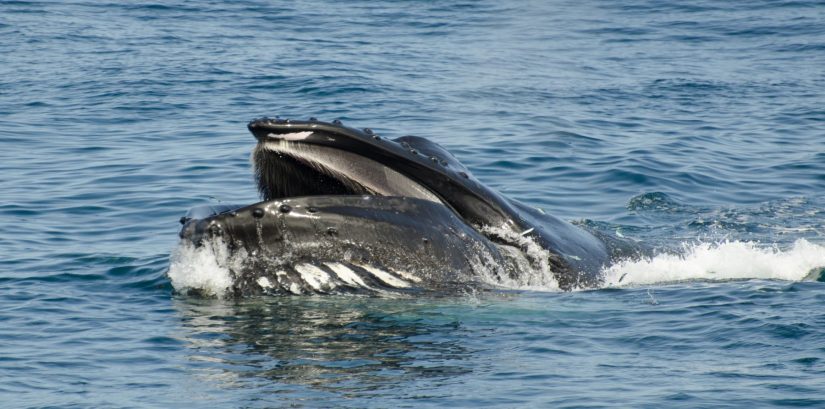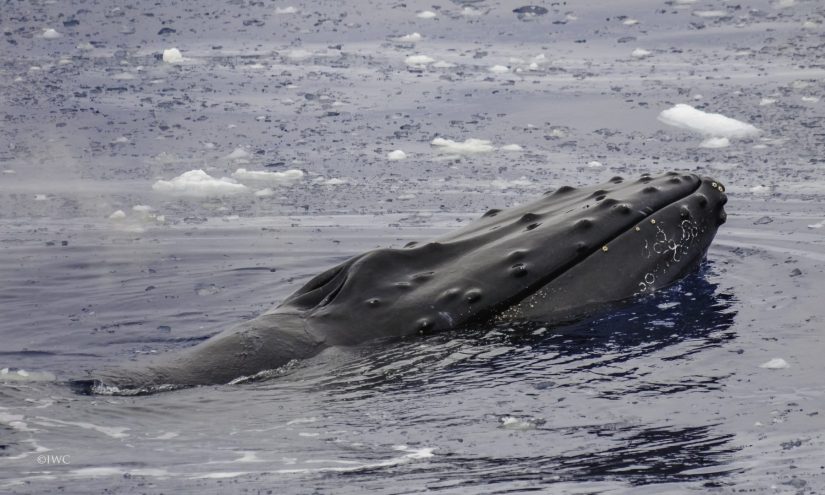Being an ecological detective: modeling population dynamics for humpback whales
Since 2017, Kristin Privitera-Johnson has been working with André Punt on creating a population model for North Pacific humpback whales as part of the work of the Scientific Committee of the International Whaling Commission. This population is modeled using various datasets – new, old, hidden, lost. Working with other members on their team, they’re uncovering new ways to deliver deeper insights into this population of humpbacks, including use of genetic and photo IDs data on population connectivity.
With a migratory lifestyle, North Pacific humpbacks breed in the warmer waters of Asia, Hawaii, Southern California, and Mexico, with data even showing movement even further down into Central America. When they feed, they move northwards, everywhere between Russia, Alaska and the Aleutian Islands to Oregon and California. In Kristin’s words, they are loyal to where they feed and breed, and return to the same places year after year.

Now a PhD student in the Punt Lab at the University of Washington School of Aquatic and Fishery Sciences (SAFS), part of Kristin’s work is to build models to test biologically driven hypotheses posed by her collaborators, related to the population structure of this species. Kristin describes this as being an ecological detective – how do we model who is where, and where do they keep coming back to? And do we have enough data to test the hypotheses? Part of the artfulness of this work is, if we assume some of these hypotheses about breeding and feeding habits, how can mathematical and statistical models be built to reflect this?
The data available to Kristin and her collaborators come from all over the North Pacific and various sources: old whaling records, bycatch, abundance surveys, photo ID mark-recapture, genetic analyses, and even tagging studies. The data is collected by academic scientists who conduct tagging and genetic studies, and organizations such as the National Oceanic and Atmospheric Administration (NOAA). This massive effort from a variety of groups giving time and data feeds into the development of models of the North Pacific humpback whales.

Building on classes at SAFS where she had to build fairly complex models using software, Kristin enjoys being able to continue using her quantitative skillsets, while also learning how the production of scientific advice works on a global scale, outside of the US. The projects she works on also demonstrate how researchers can come together from across the world to gather data, produce scientific advice, and how this is then used for real-world applications such as supporting the provision of management advice.
Describing her experience being advised by André as an apprenticeship, she gets to be a part of community-based, team-based work that pairs marine biology and fisheries science with quantitative ecology tools, weaving this all together to provide scientific advice for decision-makers.
There are many factors that potentially impact the North Pacific humpback population, from ship strikes and entanglements, to climate change and sea ice regression opening new travel pathways. During a March 2024 workshop in Seattle, Washington led by Debra Palka form NOAA Fisheries, the biological hypotheses to be tested were finalized, data sources were assembled, and André and Kristin refined earlier models for the North Pacific humpback whales. André and his collaborators will present and refine the model results during the meeting of the International Whaling Commission Scientific Committee in Bled, Slovenia, in April-May 2024.
